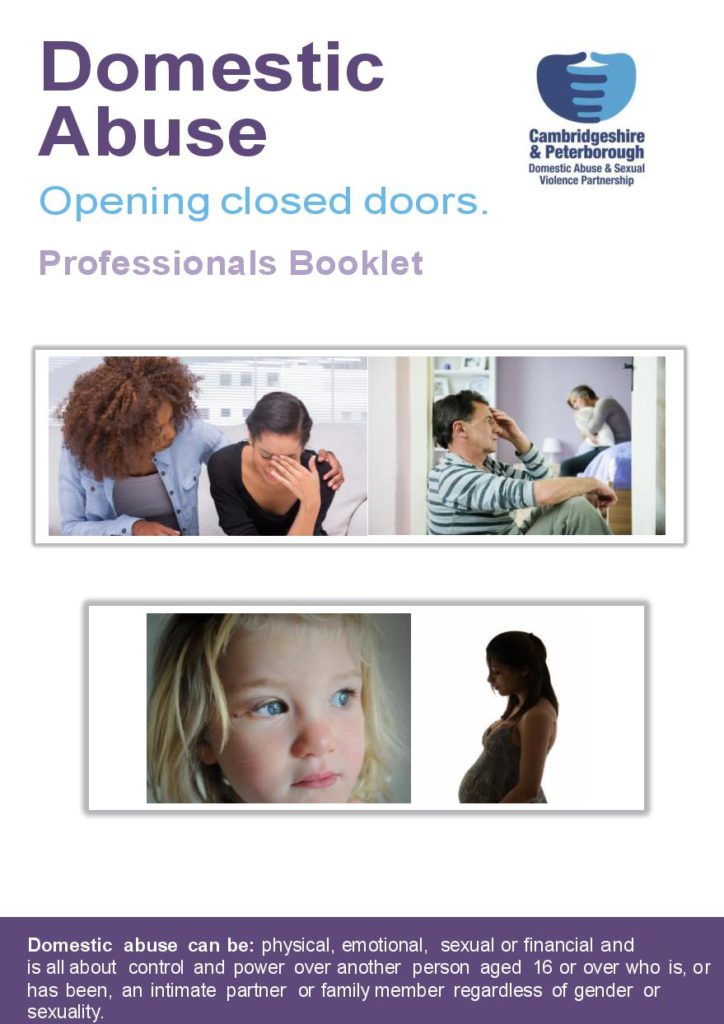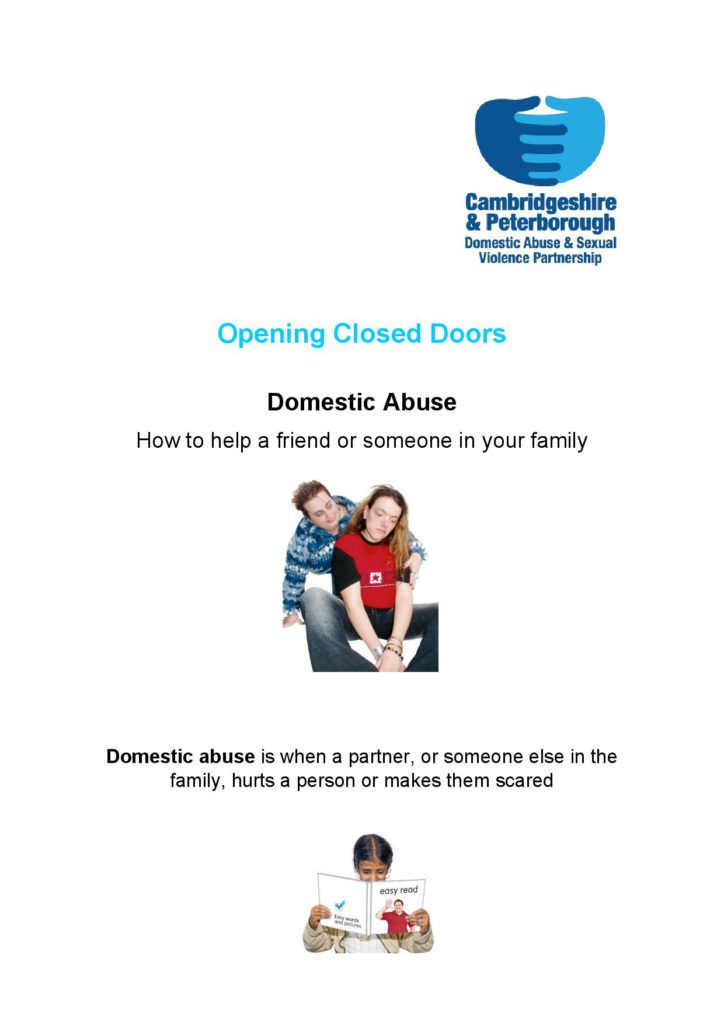Domestic Abuse Act 2021
This Act passed into law in April 2021 and it is expected that most of the changes will be implemented through 2021 and 2022, as guidance is developed in line with the new provisions.
The Government have produced some factsheets to explain what the Act is designed to achieve and how it will do this. Below are just some of them, but you can see the full list here.
Definition of domestic abuse
- This section defines ‘domestic abuse’ for the purposes of this Act.
- Behaviour of a person (‘A’) towards another person (‘B’) is “domestic abuse” if—
- A and B are each aged 16 or over and are personally connected to each other, and
- the behaviour is abusive.
- Behaviour is ‘abusive’ if it consists of any of the following:
- physical or sexual abuse
- violent or threatening behaviour
- controlling or coercive behaviour
- economic abuse (see subsection (4))
- psychological, emotional or other abuse
and it does not matter whether the behaviour consists of a single incident or a course of conduct.
- ‘Economic abuse’ means any behaviour that has a substantial adverse effect on B’s ability to:
- acquire, use or maintain money or other property, or
- obtain goods or services
- For the purposes of this Act A’s behaviour may be behaviour ‘towards’ B despite the fact that it consists of conduct directed at another person (for example, B’s child).
- References in this Act to being abusive towards another person are to be read in accordance with this section.
- For the meaning of ‘personally connected’, see section 2.
- Two people are ‘personally connected’ to each other if any of the following applies:
- they are, or have been, married to each other
- they are, or have been, civil partners of each other
- they have agreed to marry one another (whether or not the agreement has been terminated)
- they have entered into a civil partnership agreement (whether or not the agreement has been terminated)
- they are, or have been, in an intimate personal relationship with each other
- they each have, or there has been a time when they each have had, a parental relationship in relation to the same child (see subsection (2))
- they are relatives.
- For the purposes of subsection (1)(f) a person has a parental relationship in relation to a child if:
- the person is a parent of the child, or
- the person has parental responsibility for the child.
- In this section:
- ‘child’ means a person under the age of 18 years;
- ‘civil partnership agreement’ has the meaning given by section 73 of the Civil Partnership Act 2004;
- ‘parental responsibility’ has the same meaning as in the Children Act 1989;
- ‘relative’ has the meaning given by section 63(1) of the Family Law Act 1996.
- This section applies where behaviour of a person (‘A’) towards another person (‘B’) is domestic abuse.
- Any reference in this Act to a victim of domestic abuse includes a reference to a child who:
- sees or hears, or experiences the effect of, the abuse, and
- is related to A or B.
- A child is related to a person for the purposes of subsection (2) if:
- the person is a parent of, or has parental responsibility for, the child, or
- the child and the person are relatives.
- In this section:
- ‘child’ means person under the age of 18 years;
- ‘parental responsibility’ has the same meaning as in the Children Act 1989 (see section 3 of that Act);
- ‘relative’ has the meaning given by section 63(1) of the Family Law Act 1996.
Domestic abuse refers to an incident, or pattern of incidents of violence or abuse, including controlling, coercive or threatening behaviour, by someone who is or has been an intimate partner or family member, regardless of gender or sexuality. Domestic abuse is not just about partners – it can relate to all family relationships including forced marriage.
For this type of abuse the age range is extended down to 16. It includes:
- psychological, physical, sexual, financial, emotional abuse
- so called ‘honour’ based violence
- female genital mutilation
- forced marriage
- it also includes being a witness to domestic abuse of another person.
Coercive control
Coercive control is now recognised as the behaviour that underpins domestic abuse. It is a pattern of behaviour which seeks to take away the victim’s sense of self, minimising their freedom of action and violating their human rights.
A new offence of coercive and controlling behaviour in intimate and family relationships was introduced in the Serious Crime Act 2015. There is statutory guidance giving more detail.
“The offence closes a gap in the law around patterns of coercive and controlling behaviour during a relationship between intimate partners, former partners who still live together, or family members, sending a clear message that it is wrong to violate the trust of those closest to you, providing better protection to victims experiencing continuous abuse and allowing for earlier identification, intervention and prevention.” (Care Act Guidance section 14.22)
Research in Practice for Adults (RiPfA) has a range of resources to support social workers to put the law into practice, with an open access account.
The Home Office has published Guidance on controlling and coercive behaviour.
There is also a video introduction to coercive control of people with care and support needs.
S42 (safeguarding adults) and domestic abuse
Situations where domestic abuse occurs will not necessarily involve those who have care and support needs, and as a result are unable to protect themselves.
However, where the safeguarding duties apply, and a s42 enquiry is taken forward, workers will use the process to focus on the specific needs of that adult at risk, identifying their desired outcomes (Making Safeguarding Personal) while still including advocacy, ensuring multi-agency support (which can include police investigation) and enabling access to specialist domestic abuse support in the same way as the standard domestic abuse pathways.
Research (mainly on women) has shown that domestic abuse has additional impacts on people with care and support needs – for example:
- Being disabled strongly affects the nature, extent and impact of abuse. Research has shown that people’s impairments are frequently used in the abuse, including humiliation.
- Many abusers deliberately use and increase dependency on them as a way of asserting and maintaining control; where the abusive person is also the carer, they have considerable power and control as the victim relies on them.
- Sexual abuse appears to be proportionately more common for disabled than for non-disabled women, perhaps reflecting particular vulnerabilities.
- Perpetrators often use forms of abuse that exploit, or add to, the abused person’s impairment. (Making the Links, Women’s Aid 2008)
The Local Government Association have produced a guide to help staff to give better informed and more effective support to people who need an adult safeguarding service because of domestic abuse. Adult safeguarding and domestic abuse: a guide to support practitioners and managers: Second edition | Local Government Association
Domestic abuse and older people
Abuse can occur at any age and is often under reported over age 65. Safeguarding often considers ‘carer’s stress’ when incidents occur, and while one-off events do happen, it needs to be explored to see if there are any patterns or history.
Older victims are less likely to leave the abusive situation, for a wide range of reasons:
- love of abuser
- generational acceptance of the abuse
- fear of repercussions, or not being believed
- fear of being institutionalised, losing what independence they do have
- loss of ability to communicate clearly
- the responsibility of being a carer or being cared for by an abuser
- disability or physical frailty
- fear of financial insecurity
- leaving treasured possessions and home of a lifetime, pets
- lack of sense of entitlement
- responses of family members / adult children
Older people may have been victims for a very long time; they may be dependent on care provided by their abusers; they are more restricted by the impact of age, frailty or disability.
Workers may not recognise domestic abuse in older adults, perhaps seeing the more obvious abuse categories first, e.g. physical abuse, financial abuse, emotional abuse.
The perpetrator may also have care needs – someone with a dementia may hit out at their carer or be verbally abusive.
This applies to men and women – remember to avoid gender bias and stereotyping, women can be the abuser too. Men may find it harder to admit that they are being abused or feel they will not be believed. Carers of any gender can abuse or be abused. Many services supporting victims of domestic abuse are tailored towards women, which can limit the options for men.
What support is there for people who are experiencing domestic abuse?
The Cambridgeshire and Peterborough Domestic Abuse and Sexual Violence Partnership provides additional information and resources on Domestic Abuse, as well as further information on who to contact.
They have also produced a number of short films which are available in alternative languages with voiceovers in Urdu, Punjabi, Polish, Russian and Lithuanian explaining what support is available for people experiencing domestic abuse.
Cambridgeshire Deaf Association have also recorded the films in British Sign Language which can be accessed on YouTube https://www.youtube.com/channel/UCvA8lxUtXHpYnOADUxUA-7g
24-hour National Domestic Violence Freephone Helpline – 0808 2000 247
Domestic Homicide Reviews
A Domestic Homicide Review (a DHR) under section 9(3) of the Domestic Violence, Crime and Victims Act 2004 (the 2004 Act) is a review of the circumstances in which the death of a person aged 16 or over has, or appears to have, resulted from violence, abuse or neglect by
- a person to whom they were related or with whom they were in an intimate personal relationship, or
- a member of the same household.
Where a victim took their own life (suicide) and the circumstances give rise to concern, such as it emerging that there was coercive controlling behaviour in the relationship, a DHR should also be carried out.
DHRs are carried out by Community Safety Partnerships in local areas with a view to identifying the lessons to be learnt from the death, particularly regarding the way in which professionals and organisations work together to safeguard victims.


